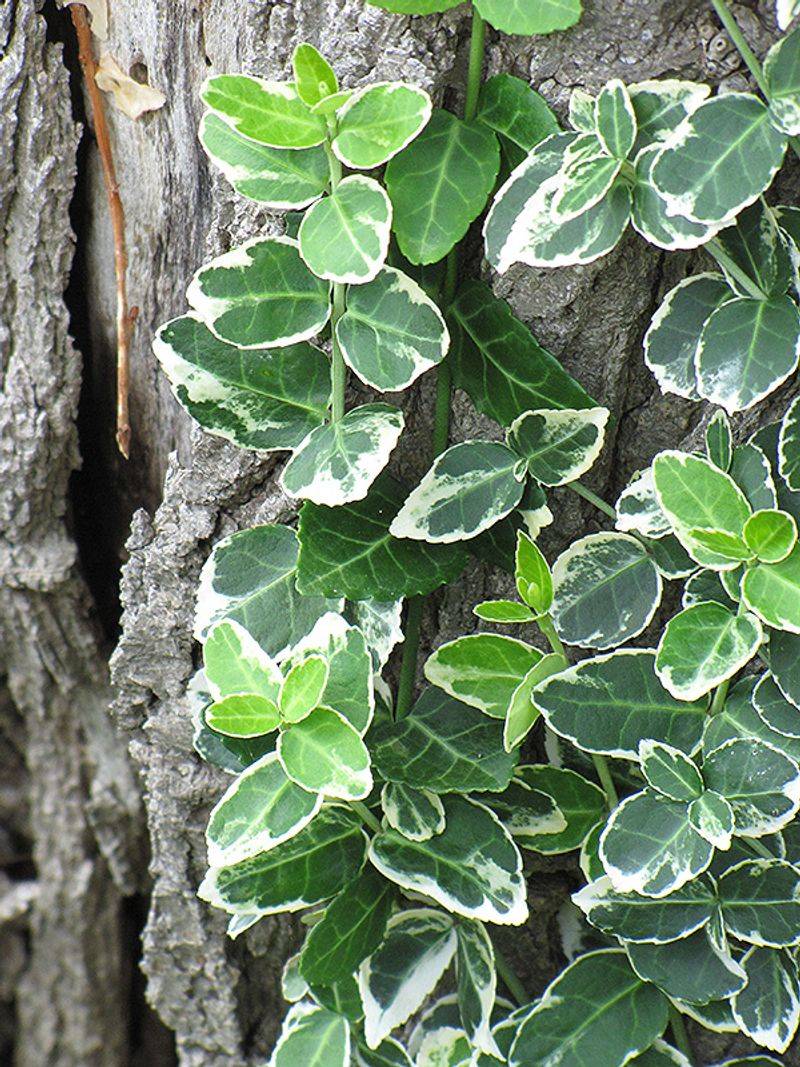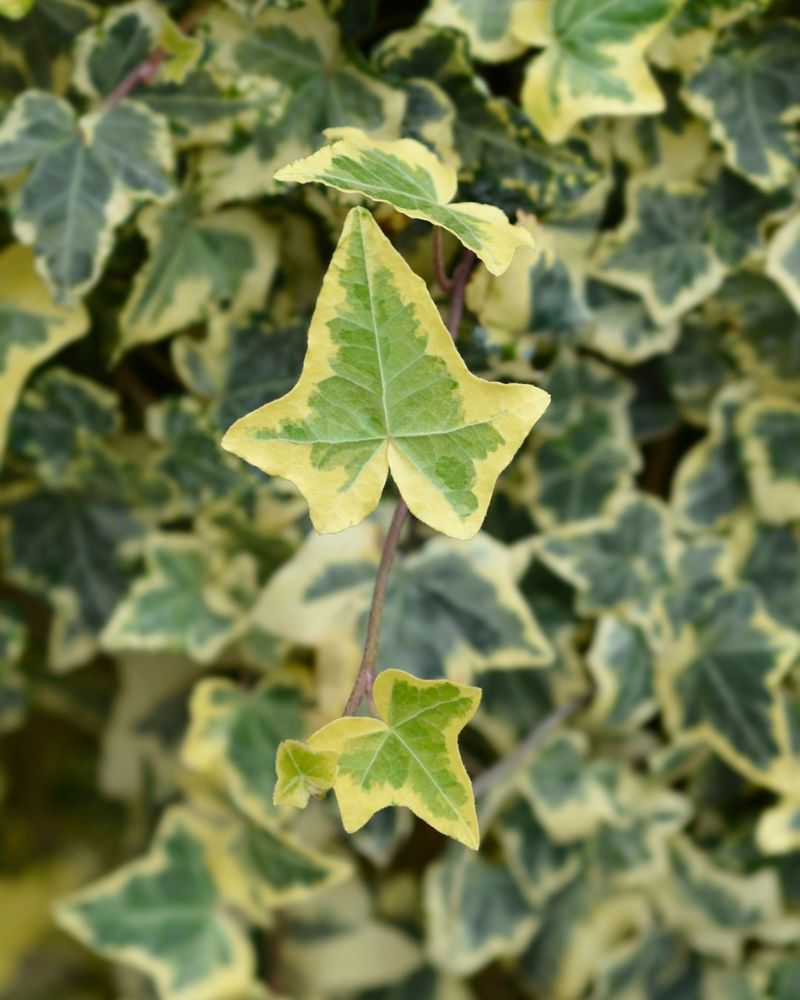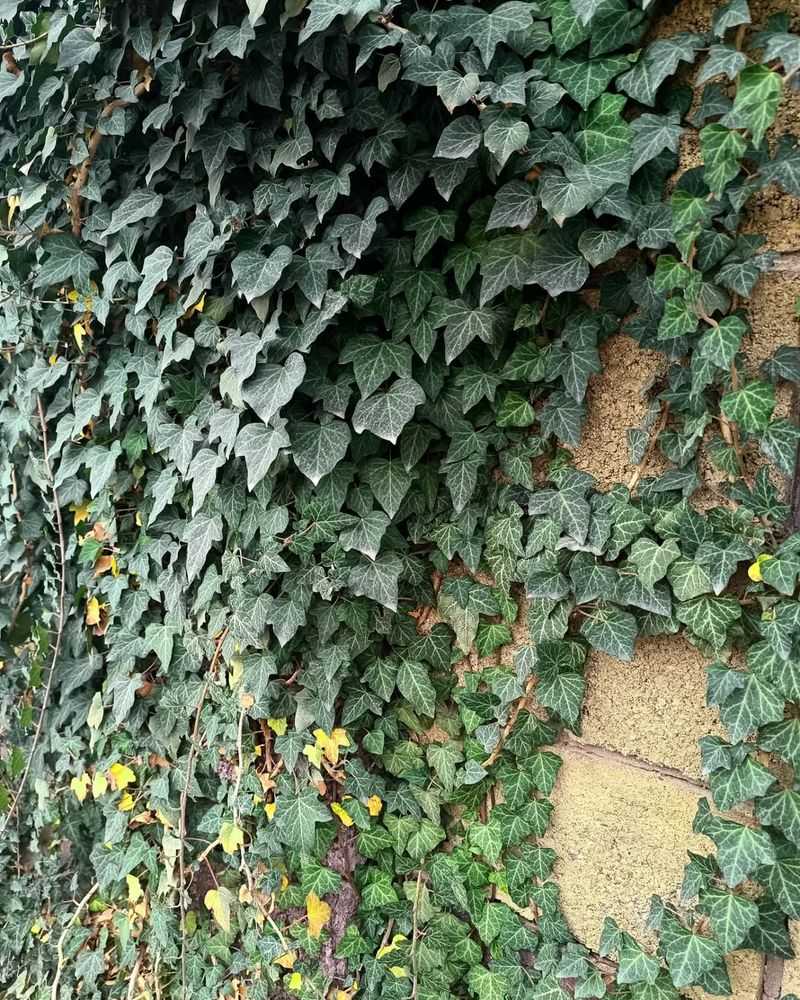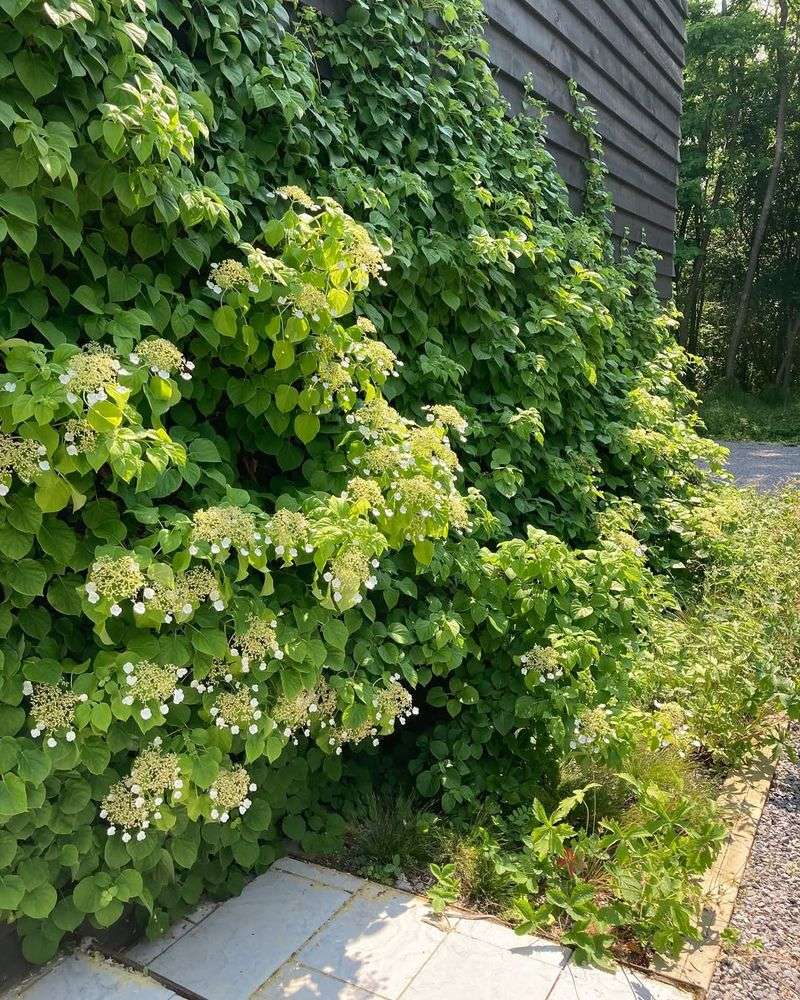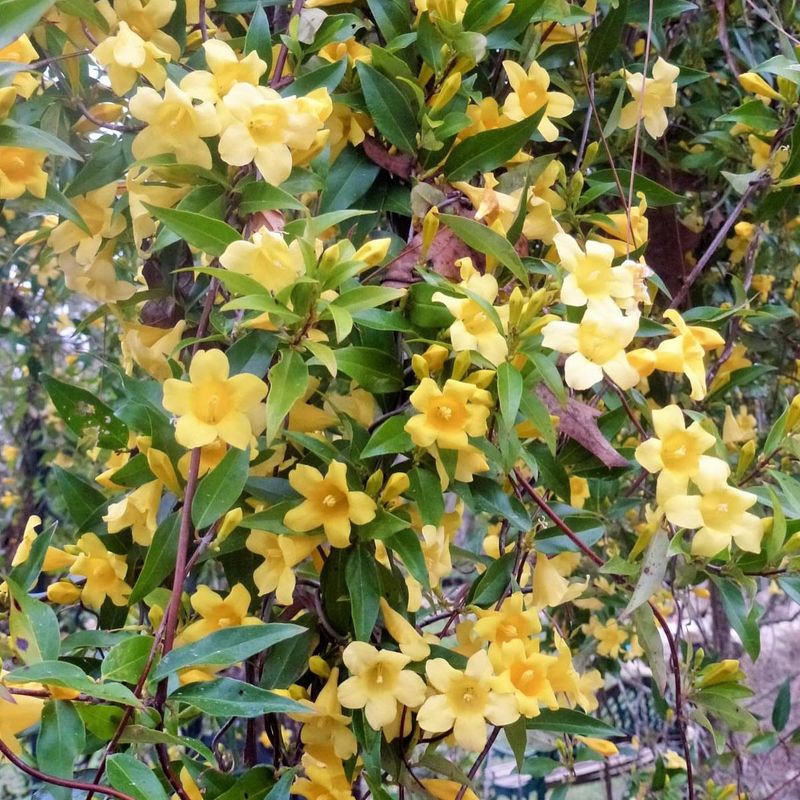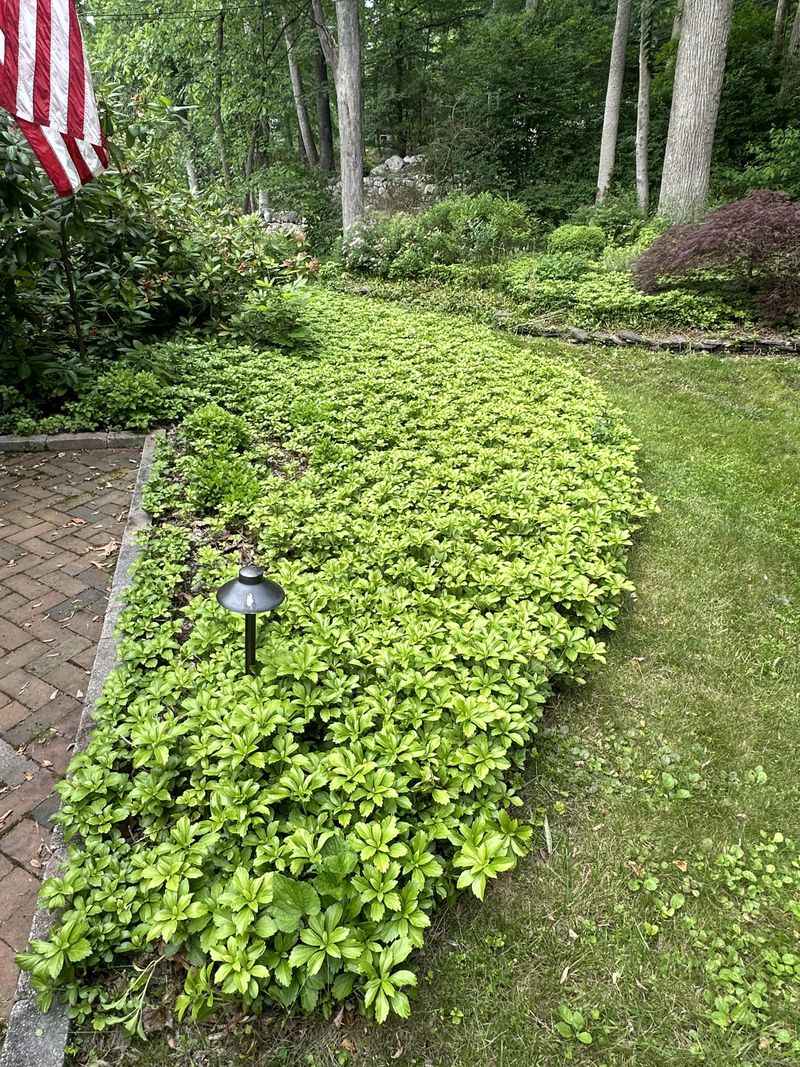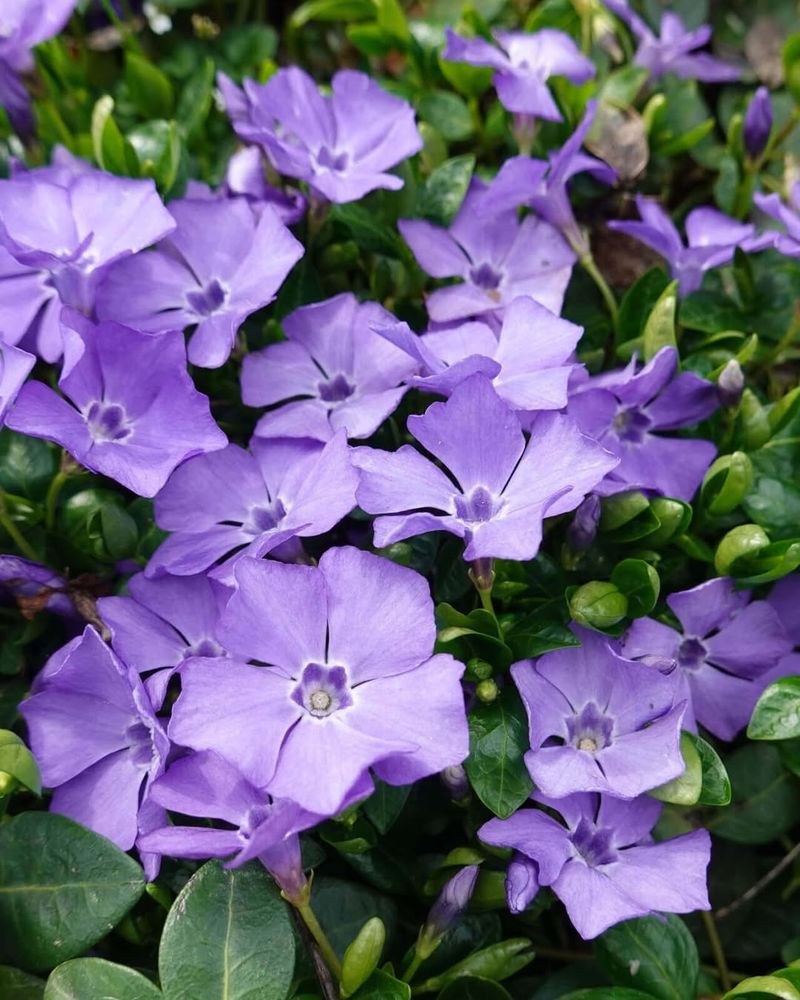Michigan’s frosty seasons often put vines on the ropes, yet a few evergreen climbers refuse to throw in the towel.
These tough contenders keep their color while most plants call it quits, giving trellises, fences, and entryways a lift when winter tries to steal the show. Each vine stands firm through snow, wind, and deep cold, adding structure and style long after other greenery folds.
1. Wintercreeper (Euonymus fortunei)
Tough as nails, wintercreeper laughs in the face of Michigan’s harshest winters. This adaptable vine clings to walls, fences, and trellises with ease, creating dense coverage that stays green all year long.
Gardeners love its low-maintenance personality and ability to grow in sun or shade. Some varieties feature variegated leaves with white or yellow edges, adding extra visual interest to dull winter landscapes.
Watch out though—it can spread aggressively if not controlled regularly with pruning.
2. English Ivy (Hedera helix)
Classic and elegant, English ivy brings a timeless European charm to Michigan gardens. Its dark green, lobed leaves create a lush carpet effect wherever it climbs, making bare walls disappear under verdant coverage.
This vine thrives in shady spots where other plants struggle, making it perfect for north-facing walls. Birds adore the shelter it provides during cold months, and mature plants even produce small berries.
Keep it trimmed to prevent it from becoming too invasive in your yard.
3. Baltic Ivy (Hedera helix ‘Baltica’)
Meet English ivy’s tougher cousin, bred specifically to handle bone-chilling temperatures. Baltic ivy features smaller leaves with prominent white veining that creates an attractive pattern throughout the seasons.
Michigan gardeners appreciate its superior cold tolerance compared to standard English ivy varieties. It climbs enthusiastically up structures or spreads as groundcover, offering flexibility in landscape design.
Did you know? This variety can survive temperatures as low as negative thirty degrees Fahrenheit without damage!
4. Thorndale Ivy (Hedera helix ‘Thorndale’)
With leaves larger than its Baltic cousin, Thorndale ivy makes a bold statement in winter landscapes. The deep green foliage develops attractive purple-bronze tones when temperatures drop, adding unexpected color to snowy gardens.
Landscape designers frequently choose this cultivar for its rapid growth and exceptional hardiness in zone five climates. It handles wind exposure better than many other ivy varieties, making it ideal for exposed locations.
Regular watering during establishment helps it develop strong root systems for long-term success.
5. Climbing Hydrangea (Hydrangea anomala petiolaris)
Patience pays off with climbing hydrangea, though it starts slowly before becoming a showstopper. Once established, this vine produces stunning white lacecap flowers in summer while maintaining attractive foliage through winter months.
The exfoliating bark adds textural interest during dormancy, creating visual appeal even without flowers. It climbs using aerial rootlets, clinging naturally to rough surfaces without requiring additional support structures.
Give it three to five years to settle in, then watch it transform your garden walls.
6. Crossvine (Bignonia capreolata)
Trumpet-shaped flowers in shades of orange and red make crossvine a hummingbird magnet during spring blooms. The semi-evergreen foliage turns burgundy-purple in winter, providing color when most plants look drab and lifeless.
Native to the southeastern United States, hardy varieties perform surprisingly well in southern Michigan locations. It climbs using tendrils that grip supports firmly, creating vertical interest without damaging structures.
Plant it in full sun for the best flowering performance and deepest winter color.
7. Creeping Juniper (Juniperus horizontalis)
Technically a groundcover, creeping juniper cascades beautifully over walls and slopes like a living waterfall. Its needle-like foliage comes in shades ranging from blue-green to silver, maintaining color intensity throughout brutal Michigan winters.
Deer avoid this plant thanks to its aromatic oils, making it perfect for rural properties with wildlife pressure. It tolerates poor soil, drought, and road salt better than most evergreens.
Several cultivars offer different growth habits and color variations to match your landscape design needs.
8. Carolina Jessamine (Gelsemium sempervirens)
Bright yellow flowers burst forth in early spring, announcing winter’s end with cheerful trumpet-shaped blooms. This southern native pushes the boundaries of cold hardiness but succeeds in protected microclimates throughout southern Michigan.
The glossy evergreen leaves create an attractive backdrop year-round, even when flowers aren’t present. Plant it against south-facing walls where reflected heat provides extra warmth during cold snaps.
Remember that all parts are toxic if ingested, so plant away from areas where children or pets play.
9. Japanese Spurge (Pachysandra terminalis)
Shade-loving Japanese spurge spreads horizontally to form dense evergreen mats that suppress weeds effectively. While typically used as groundcover, it can cascade over retaining walls and raised beds like a flowing green curtain.
Michigan gardeners value its ability to thrive under trees where grass struggles to grow. Small white flowers appear in spring, though the real star is the glossy foliage that stays vibrant through snow and ice.
Divide established plantings every few years to maintain vigor and prevent bare patches from developing.
10. Periwinkle (Vinca minor)
Charming blue-purple flowers dot this trailing evergreen throughout spring and sporadically into fall. Periwinkle spreads enthusiastically to cover bare ground, banks, and slopes with glossy green foliage that persists through Michigan winters.
Homeowners appreciate how it fills difficult spaces under trees and on steep grades where mowing proves challenging. Various cultivars offer different flower colors including white and deep purple options.
Establish boundaries early because this vigorous grower can escape into unwanted areas if left unchecked.


